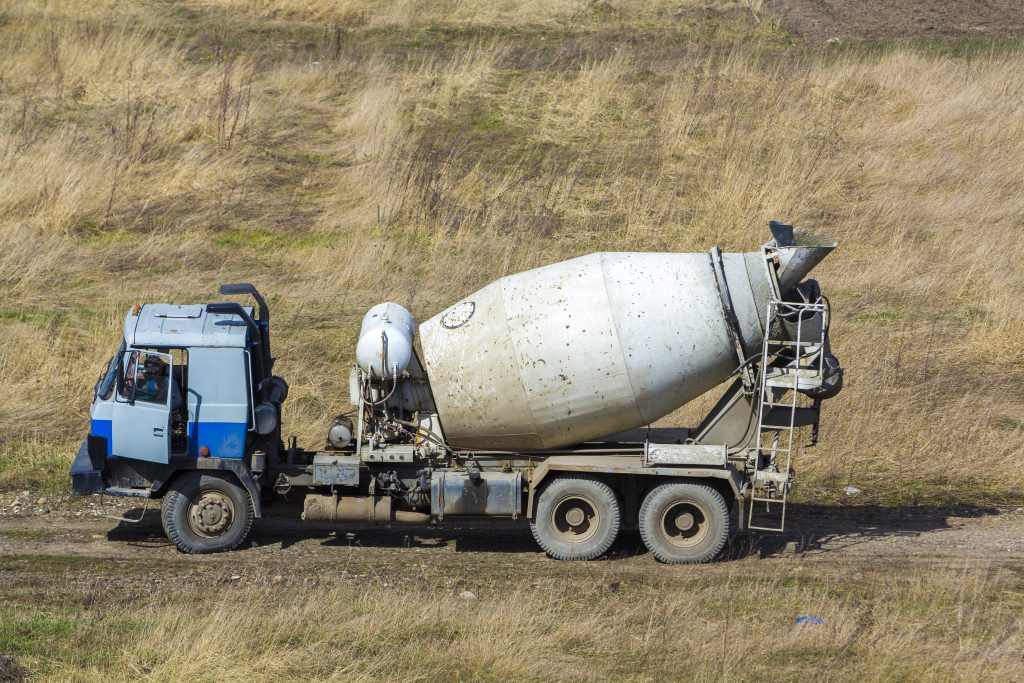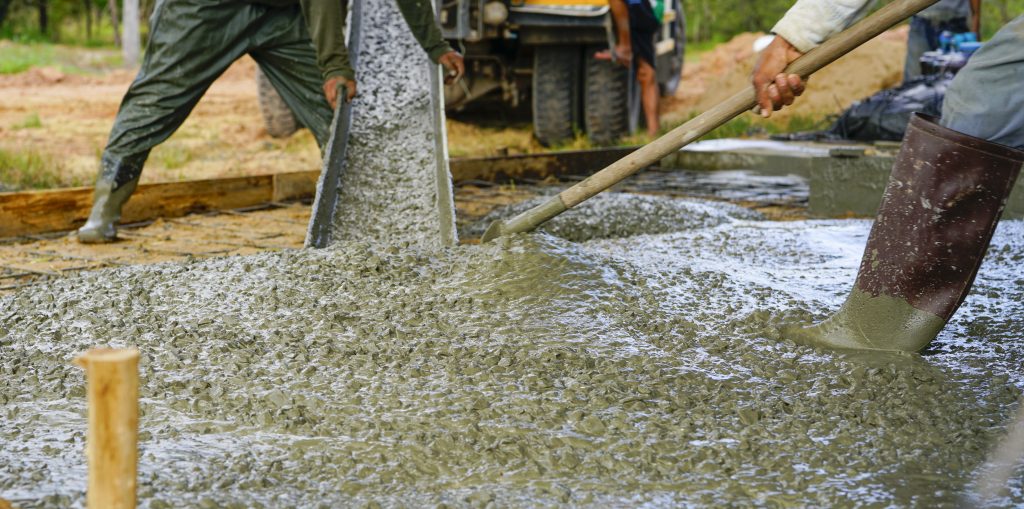One of the most fundamental decisions in any concrete project is whether to order ready mixed concrete or mix it on-site. This choice affects everything from project costs and timelines to final quality and long-term durability. At Express Concrete, we understand that each project has unique requirements, and whilst we specialise in ready mixed concrete, we believe in helping our customers make informed decisions based on their specific circumstances.
Both approaches have distinct advantages and limitations, and the optimal choice depends on factors including project scale, site conditions, quality requirements, labour availability, and budget constraints. Let’s examine both options comprehensively to help you make the right decision for your project.
Understanding Ready Mixed Concrete
Ready mixed concrete is produced at specialised batching plants using computerised systems that precisely measure and combine cement, aggregates, water, and additives. The concrete is mixed in rotating drum trucks during transport, arriving at your site ready for immediate placement. This industrial approach ensures consistent quality and eliminates the need for on-site mixing equipment and materials storage.
The process involves strict quality control measures, including regular testing of raw materials, calibration of batching equipment, and monitoring of mix designs to meet specific strength and performance requirements. Professional suppliers maintain detailed records of each batch, providing traceability and quality assurance that’s difficult to achieve with on-site mixing.
On-Site Mixing: The Traditional Approach
On-site mixing involves bringing dry materials (cement, sand, gravel) and water to your project location and combining them using portable mixers, stationary mixers, or even hand mixing for small quantities. This approach gives you complete control over the mixing process and timing, allowing for adjustments as work progresses.
Modern on-site mixing can range from small portable mixers suitable for minor projects to sophisticated mobile batching plants that can produce substantial quantities of concrete with quality approaching that of ready mixed suppliers.
Quality and Consistency Comparison
Ready Mixed Concrete Advantages
Ready mixed concrete offers superior consistency and quality control through several key factors:
Precision Batching: Computer-controlled systems measure materials to within 1-2% accuracy, far exceeding what’s achievable through manual batching. This precision directly translates to consistent strength and durability characteristics.
Professional Mix Design: Suppliers employ qualified technicians who design mixes to meet specific performance criteria, considering factors like exposure conditions, required strength, workability, and durability requirements.
Quality Assurance: Regular testing of materials and finished concrete ensures compliance with British Standards. Most suppliers provide certificates of conformity and maintain comprehensive quality records.
Controlled Environment: Materials are stored in controlled conditions, protecting them from contamination and moisture that can affect concrete performance.
On-Site Mixing Considerations
On-site mixing quality depends heavily on operator skill, equipment condition, and site conditions:
Variable Results: Manual measurement of materials often leads to batch-to-batch variations that can affect final strength and appearance. Even experienced operators find it challenging to maintain consistent water-cement ratios.
Material Quality: On-site storage of materials exposes them to weather conditions that can affect their properties. Wet sand, contaminated aggregates, or degraded cement can compromise concrete quality.
Limited Testing: On-site projects rarely have access to the testing facilities available to ready mixed suppliers, making it difficult to verify concrete quality before placement.
Cost Analysis
Ready Mixed Concrete Costs
Ready mixed concrete typically costs more per cubic metre than the raw materials for on-site mixing, but this direct cost comparison doesn’t tell the complete story:
Labour Savings: Eliminates the need for mixing labour, allowing your workforce to focus on placement and finishing. For large projects, this can represent significant cost savings.
Equipment Costs: No need to purchase, hire, maintain, or fuel mixing equipment. This includes mixers, wheelbarrows, shovels, and measurement tools.
Material Waste: Precise ordering reduces material waste, and unused ready mixed concrete can often be returned (subject to conditions).
Time Efficiency: Faster project completion can reduce overall labour costs and equipment hire periods.
On-Site Mixing Economics
On-site mixing appears less expensive initially but involves several hidden costs:
Labour Intensive: Requires dedicated personnel for mixing, often taking skilled workers away from other tasks.
Equipment Costs: Mixer hire, fuel, maintenance, and potential breakdowns add to project costs.
Material Waste: Over-ordering of materials and unused mixed concrete create waste that affects overall project economics.
Quality Risks: Poor-quality concrete may require costly repairs or replacement, far exceeding any initial savings.
Project Scale Considerations
Large Projects (Over 10 Cubic Metres)
Ready mixed concrete becomes increasingly advantageous as project size grows:
- Consistency: Maintaining uniform quality across large volumes is challenging with on-site mixing
- Speed: Ready mixed concrete allows for continuous pours without interruption
- Logistics: Managing large quantities of materials on-site becomes complex and space-consuming
- Labour Efficiency: Workforce can focus on placement rather than mixing
Medium Projects (2-10 Cubic Metres)
This range often represents the decision point where either approach can be viable:
- Ready mixed concrete offers quality and convenience advantages
- On-site mixing may provide cost savings if labour is readily available
- Site access and storage space become important factors
- Project timeline flexibility influences the optimal choice
Small Projects (Under 2 Cubic Metres)
Small projects present unique considerations:
- Minimum order quantities for ready mixed concrete may result in waste
- On-site mixing allows precise quantity control
- Labour costs become less significant
- Quality requirements may be less critical for some applications
Timing and Scheduling Factors
Ready Mixed Concrete Timing
Ready mixed concrete requires careful scheduling coordination:
Fixed Delivery Times: Once concrete arrives, you typically have 60-90 minutes to complete placement, creating time pressure for less experienced teams.
Weather Dependency: Deliveries may be affected by severe weather conditions, though suppliers usually provide alternative scheduling.
Advance Planning: Orders typically require 24-48 hours notice, reducing spontaneous work flexibility.
On-Site Mixing Flexibility
On-site mixing offers greater timing control:
Work at Your Pace: Mix only what you can place effectively, reducing waste and time pressure.
Weather Adaptability: Can pause and resume work as weather conditions change.
Spontaneous Work: Allows for immediate response to unexpected requirements or opportunities.
Site Access and Logistics
Ready Mixed Concrete Requirements
Successful ready mixed concrete delivery requires:
Vehicle Access: Standard concrete trucks need adequate road width, turning space, and overhead clearance.
Proximity: Concrete trucks can typically reach within 30 metres of placement location using chutes and extensions.
Ground Conditions: Soft ground or steep slopes may prevent truck access, requiring alternative delivery methods.
Permits: Some locations require traffic management or delivery permits.
On-Site Mixing Logistics
On-site mixing involves different logistical considerations:
Material Storage: Requires weather protection for cement and adequate drainage for aggregates.
Equipment Access: Mixing equipment must reach work areas, though this is typically easier than truck access.
Water Supply: Reliable clean water source essential for consistent mixing.
Waste Management: Must plan for disposal of unused materials and equipment cleaning.
Environmental Considerations
Ready mixed concrete production typically offers better environmental performance through:
- More efficient use of raw materials
- Reduced transport movements (bulk delivery vs. multiple material deliveries)
- Better waste management at batching plants
- Potential for recycled materials incorporation
On-site mixing may generate more waste and typically involves more vehicle movements for material delivery.
Making the Right Choice
The decision between ready mixed concrete and on-site mixing should consider:
Choose Ready Mixed Concrete When:
- Project exceeds 3-4 cubic metres
- Quality consistency is critical
- Time constraints are tight
- Skilled mixing labour is unavailable
- Site storage space is limited
- Long-term durability is paramount
Consider On-Site Mixing When:
- Project is very small (under 2 cubic metres)
- Budget constraints are severe
- Site access prevents truck delivery
- Work schedule is highly flexible
- Specialised mix requirements exist
- Learning and skill development are project goals
Expert Recommendation
At Express Concrete, we believe ready mixed concrete offers the best value proposition for most projects over 2 cubic metres. The combination of quality assurance, time savings, and reduced complexity typically outweighs the higher material cost. However, we recognise that each project is unique, and we’re happy to discuss your specific requirements to help determine the most suitable approach.
For projects where ready mixed concrete isn’t optimal, we can recommend trusted suppliers of materials and equipment for on-site mixing, ensuring you receive the best possible outcome regardless of your chosen approach.




